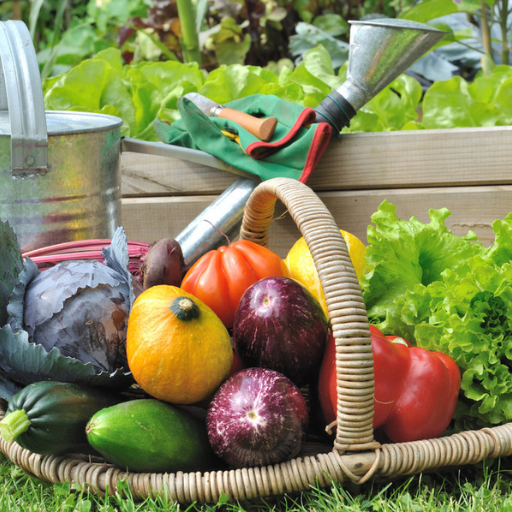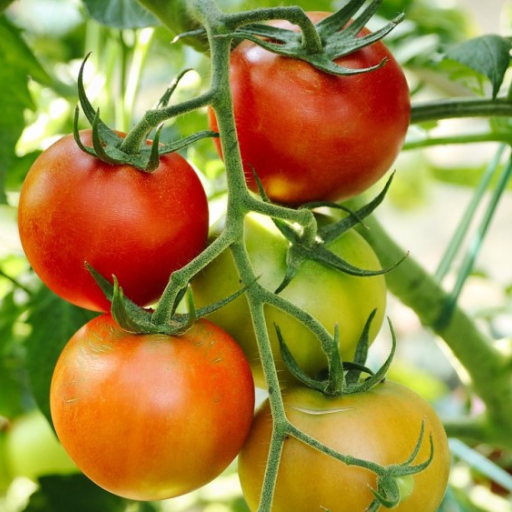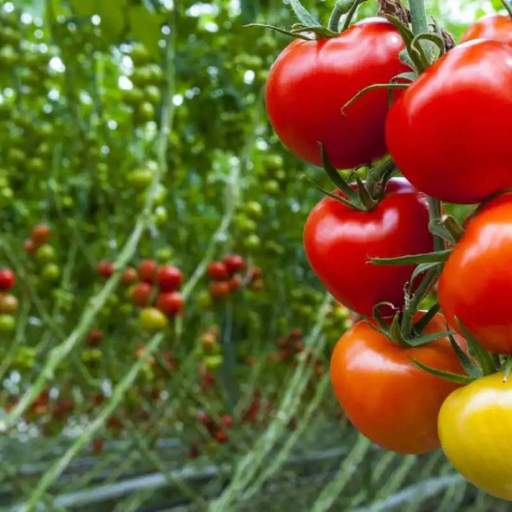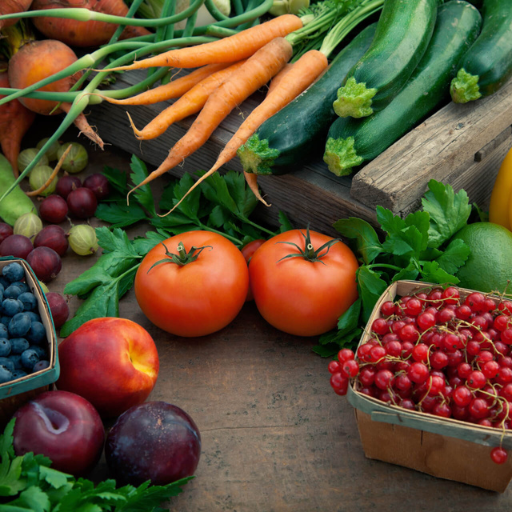Gardening enthusiasts and professionals alike often seek effective ways to nourish their plants, ensuring robust growth and bountiful yields. This blog delves into the benefits of using organic tomato and vegetable fertilizer, a sustainable and eco-friendly solution that empowers gardeners to cultivate healthier plants. As we explore the advantages of organic fertilizers, we will also provide practical tips and insights on how to incorporate them into your gardening routine, enabling you to achieve optimum results while maintaining a commitment to environmental stewardship. Whether you are a seasoned gardener or just starting out, this blog aims to equip you with the knowledge needed to enhance your gardening efforts and foster a thriving, natural garden.
What Is Organic Tomato and Vegetable Fertilizer and Why Use It?

Organic Fertilizer Understanding
Organic Tomato and Vegetable Fertilizer comes from sources such as compost, manure, bone meal and other plant and animal materials. Unlike synthetic fertilizers that are manufactured through chemical processes, organic fertilizers provide essential nutrients such as nitrogen, phosphorous and potassium in a natural form that the soil can easily take-up. This improves soil fertility by enhancing its structure as well as increasing its capacity to retain water and nutrients. It is important for farmers to use organic fertilizer because it helps to make their plants grow stronger while at the same time encouraging more balanced ecosystems thus reducing dependence on chemicals.
Benefits of Organic Tomato And Vegetable Fertilizer
- Soil Health Improvements: Organic fertilisers enhance soil structure which encourages growth of beneficial microorganisms and earthworms; thereby increasing aeration and water retention – crucial factors for plant development and resilience.
- Sustainability and Eco-friendliness: These are obtained from renewable resources, hence they help in reducing carbon print brought about by synthetic fertilizers. They are used in minimizing chemical run-off into streams thus promoting healthier ecosystems.
- Increased Nutrient Availability: Instead of going overboard with fast nutrient release, organic fertilisers slowly release them over long periods so that crops enjoy favourable conditions throughout the growing season.
If you want your garden to become greener faster and produce more crops naturally then incorporate an organic tomato or vegetable fertilizer into your gardening routine.
Health Benefits And Environmental Effects
Using organic tomato and vegetable fertilizers has several health benefits besides being eco-friendly. First, these fertilizers enable production of healthy vegetables rich in nutrients without toxic residues associated with pesticide use leading to better human health. That means there is no risk of toxic exposure that may result from using synthetic fertilizers. Environmentally speaking, organic fertilisers reduce soil erosion as well as water pollution due to their biodegradability combined with absence of harmful chemicals like leaching out into groundwater sources under lakes or rivers. This is accomplished by promoting more biodiverse environments where beneficial insects and soil organisms can flourish. Thus, the use of organic fertilisers is a supporting factor in the long run for sustainable farming practices and natural habitats.
How to Apply Organic Tomato and Vegetable Fertilizer in Your Garden
Proper Application: Preparation procedures
- Preparation: begin these instructions by preparing your garden soil. Clear up all weeds and debris, loosen the soil to enable better root development and nutrient uptake.
- Soil Testing: Carry out a soil test for pH and nutrient levels. This helps you know what your garden requires specifically and allows for accurate application of organic fertilizer.
- Selection of Fertilizer : Select the appropriate organic tomato and vegetable fertilizer based on the results of your soil test as well as the requirements of plants in question. Go for a balanced one that has specific ratios of nutrients suitable for tomatoes and vegetables.
- Amount Applied: The correct quantity is determined by referring to manufacturer’s directions on the label or container. Excessive amounts can be detrimental to plants while less can leave them starved of necessary nutrition.
- Spread Evenly: Sprinkle the organic fertilizer over the entire surface area of the soil. For granular types, this can be ensured using a spreader tool. Use liquid fertilizers that are diluted and applied through watering cans or hose sprayers.
- Work into Soil: Take a gardening fork or hoe to lightly work in some inches of topsoil with this chemical. Nutrients will thereby be incorporated into earth matter making their availability easier for plant root systems to access them.
- Watering Stage: After applying fertilizer, water garden properly so as to activate its nutrients quickly throughout plant tissues.
- Repeat Feeding process: Apply it again in line with recommendations given depending on particular needs of your plants. Regular feeding helps lose no mineral concentration thus supporting continuous healthy growth within any given farm plot respectively
By following these steps that ensure full benefits from organic tomato and vegetable fertilizers, they will result into healthier plants; hence increased harvest yields thereof.
Best Practices in Tomato Planting
For successful tomato harvesting, there are several best practices:
- Selecting an Appropriate Spot :Choose a sunny spot in your backyard that gets no less than six to eight hours of direct sunlight every day. They thrive in warm conditions and require a lot of sunshine while growing and bearing fruits.
- Preparation Of Soil :For their growth, tomatoes need well-drained fertile soil that is slightly acid which ranges from 6.0 to 6.8 pH. Incorporate such organic matter as compost or well-rotted manure into the soil for improving its structure and fertility.
- Proper Planting Season :Don’t plant your tomato seedlings before the possibility of frost is over, and the land has warmed up. Depending on where you are located, this might be late spring or early summer when seedlings can be transplanted after last date of frost.
- Spacing And Staking: Space tomatoes about 18-24 inches apart to allow air circulation between them hence reducing chances for diseases’ occurrence. Use stakes or cages to support plants off the ground with fruit dangling from these structures.
- Watering and Mulching: Water tomato plants deeply and regularly especially during dry spells. Aim at just keeping it moist without water logging. Mulch around the base of your plants to conserve moisture, suppress weeds and maintain stable soil temperature
- Feeding: While planting, use a slow-release fertilizers which are balanced with a ratio equal numbers at all parts (by mass) throughout entire cultivation period give additional feeding that aim at supplementing phosphorus and potassium respectively for better fruit development in any given season
- Pest and Disease Management: Keep an eye on your plants often to see if there are any pests or diseases present. Use appropriate organic or chemical management methods, while practising crop rotation to minimize soil borne diseases.
These best practices will enable you produce strong and productive tomato plants that will harvest abundantly at the end of the season.
Timing and Frequency of Application
The following are some guidelines that will ensure you maximize your tomato health and yield:
- Adequate watering: Water thoroughly and consistently, around 1-2 inches per week. During hot dry spells, increase frequency ensuring the soil is uniformly moist but not waterlogged.
- Fertilizer application: Use a balanced slow release fertilizer at planting. For fruit development, supplement with additional feedings every 3-4 weeks during growing season using a high phosphorus/potassium fertilizer.
- Pest and Disease Control: Examine your plants regularly (at least once a week). Apply natural or chemical pest control once signs of infestation are seen. Treatments for common plant diseases like blight should be used as directed by the label, which is generally about every 7-10 days during humid or wet conditions.
By adhering to these tips throughout the growing season you ensure that your tomatoes receive proper care.
Which Nutrients Are Essential for Tomatoes and Vegetables?

Organic Fertilizers and the Nutrients They Contain
Tomatoes, vegetables require several important nutrients for growth and development, all of which can be found in organic fertilizers.
These are the major nutrients:
- Nitrogen (N): Vital for a plant’s growth, nitrogen is essential to both healthy stem and leaf development. This element is also required in photosynthesis and generally contributes towards strong plants.
- Phosphorus (P): It is crucial to root development and energy transmission inside plants. Phosphorus enhances flowering and fruiting which is particularly important for tomato plants.
- Potassium (K): It boosts overall plant health through improvements in disease resistance, water regulation, stress tolerance as well as other aspects. In addition this mineral facilitates sturdy stems and high quality fruit.
Furthermore, organic fertilizers may also contain secondary nutrients such as calcium (Ca), sulfur (S), magnesium (Mg) that ensure health of these crops healthier. At the same time soil structure improves while microbial activity increases making them conducive for growing your crops.
Role of Nitrogen, Phosphorous, Potassium
The primary macronutrients nitrogen, phosphorus and potassium are often referred to because they are needed by plants in large quantities for growth and development.
- Nitrogen: Major role played includes protein synthesis but it also takes part in enzyme synthesis as well as chlorophyll synthesis. For example during vegetative stage nitrogen has the capability of promoting healthy leaves production that supports photosynthesis or even general process of producing energy by green plants.
- Phosphorus: Energy transfer within cells just like atp stands out as one critical role phosphorus plays among other things. Additionally its presence enables rooting indispensable when talking about flowering stage or fruiting period; there must be enough fruits with big root systems absorbing more nutrition elements including water.
- Potassium: It has various functions that regulate physiological processes within plants. Its implications include strengthening cell walls leading to improved disease resistance in plants and tolerance to stress. It controls the opening and closing of stomata thereby regulates water regulation. Potassium also helps in cell division and protein synthesis, making it important for the development of strong stems and high-quality fruits.
These nutrients ensure the general health and productivity of tomato plants as well as vegetables thus indicating their significance in gardening or farming practices that are successful. Balanced application of nitrogen, phosphorus, potassium is essential to enhance growth and produce healthy crops.
More Nutrients Required For Optimum Growth
While nitrogen, phosphorus, and potassium are essential for plant growth there are some other key nutrients that should be present:
- Calcium (Ca): Tomato disorders such as blossom end rot can be prevented by calcium which also contributes to root and leaf formation.
- Magnesium (Mg): Magnesium is one element that makes up chlorophyll which is responsible for photosynthesis. It plays a role in activation of enzymes and nutrient uptake hence contributing to energy production by the whole plant.
- Sulfur (S): In addition sulfur assists form proteins and vitamins since it is required for amino acid synthesis. This mineral enhances metabolism in plants as well as defense mechanisms exhibited against diseases.
The micronutrients include iron (Fe), manganese (Mn), zinc (Zn), copper (Cu), molybdenum (Mo), boron (B) and chlorine (Cl). Micronutrients are known to be essential elements used by the body at very low levels for example, enzyme functioning; while others play roles such as hormone regulation leading to better functioning of all metabolic processes within plants themselves.
Therefore fertilization must incorporate these elements in order to maximize on growth rate, disease resistance leading to high yielding crops. Each nutrient has a distinct function in plant physiology hence making proper nutrient management strategy necessary starting from balanced fertilization practice.
How to Choose the Best Organic Tomato and Vegetable Fertilizer?

Vital Points to Consider
Factors that are important in choosing the best organic tomato and vegetable fertilizers include:
- Nutrient Content: Some of the nutrients that should be present in a good fertilize include nitrogen, phosphorus, potassium (NPK) and secondary plant nutrients such as sulfur, calcium, magnesium and micro-nutrients e.g. zinc, iron and manganese.
- Organic Certification: Ensure you choose fertilizers that have been labeled as OMRI Listed or USDA Organic to meet organic farming standards and which do not consist synthetic chemicals.
- Formulation Type: Granular, liquid or slow-release are some of the types of organic fertilizer available. It is advisable to choose one depending on your gardening needs; for instance, slow release granules supply nutrients at regular intervals while liquids provide them quickly..
- Source Ingredients: You can go for compost based ones ,those made from manure,bone meal,fish emulsion and others like them These ingredients increase soil microbial activity as well as organic matter content.
- Application Method: Ease of application and frequency of re-application is another factor to consider when selecting a fertilizer. Some types will require frequent applications while others would offer feeding over an extended period since they have slow release properties.
- Specific Plant Needs: Tomatoes and vegetables have unique nutrient requirements. A specialized tomato fertilizer will typically have higher calcium content to prevent blossom end rot, while a general vegetable fertilizer should cater to a wide range of garden plants.
By considering these factors one can pick out an organic fertilizer that fosters healthy development with increased yields as well as strong plant vigor.
Comparison among Different Fertilizer Products
When comparing different fertilizer products special focus should be given to nutrient contents present in each formulation type taking into account specific nutrient requirement by crops so far optimal yield is concerned. Comparisons between three popular organic fertilizers were obtained from top sources according to this research:
- LOYAL Tomato Tone: Tomato Tone is a highly acclaimed tomato food. With a 3-4-6 NPK ratio and important micronutrients like magnesium and calcium to prevent blossom end rot, it is a slow-release fertilizer that provides nutrients over time. It is OMRI Listed for organic gardening.
- Jobe’s Organics Vegetable & Tomato Fertilizer: This organic fertilizer has an N-P-K ratio of 2-5-3 and contains the Jobe’s Biozome, proprietary blend of beneficial microorganisms, which make it suitable for use on vegetables as well. The granules provide easy application and long-term nutrition.
- Dr. Earth Home Grown Tomato, Vegetable & Herb Fertilizer: This particular one stands out because of its broad-spectrum nutrient content with NPK ratio of 4-6-3 compared to other similar ones and also harbors soil micro-biota. Some components in it are kelp meal, fish bone meal and alfalfa meal thereby supporting healthy soil ecology. It comes in granular or liquid forms depending on which type one prefers.
Comparing these products would help gardeners acquire fertilizers that match their specific requirements so as to achieve sturdy growth for plants with high yields.
Consumer Reviews and Recommendations
LOYAL Tomato Tone
It works well with many customers having nothing but praise for LOYAL Tomato Tone in promoting good growth of tomato plants while at the same time solving major issues such as blossom-end rot.Many reviewers were happy about this product since it is made in such a way that released slowly saving the plant from burning up due to excessive supply of nutrients.Its organic certification and presence of essential minerals have also been hyped by several users.
Jobe’s Organics Vegetable & Tomato Fertilizer
Positive reviews about Jobe’s Organics Vegetable & Tomato Fertilizer indicate that it is simple to use and enhances soil health tremendously. The product is also praised by other users who state that the Biozome by Jobe’s increases nutrient absorption and stimulates plant growth. The granular form of this fertilizer has a good reputation as it is easy to apply and has long-lasting effects.
Dr. Earth Home Grown Tomato, Vegetable & Herb Fertilizer
Dr. Earth Home Grown Tomato, Vegetable & Herb Fertilizer has a high rating given its comprehensive nutrition content as well as the fact that it comes in both forms; solid or liquid. Its natural components have made many gardeners recommend this product because it helps in maintaining healthier plants as well as fertile soils since it contains beneficial microbes for instance. Growers of tomatoes, vegetables, and herbs like the instant and slow release nutrients mixed with their fertilizers so that there can be continuous feeding of their crops.
Are There Any Common Issues When Using Organic Vegetable Fertilizer?

Avoid Excessive Fertilizer
An overabundance of fertilizers is a common issue and this can be detrimental to plant health. To avoid this, I always start by adhering to the recommendations regarding the fertilizer package. The point that more isn’t always better must not leave my mind. I also regularly inspect my plants for an excess of nutrients such as yellowing leaves or burnt leaf edges. I test the soil prior to applying further nutrients to justly replenish them. Finally, every time I incorporate organic matter like compost to maintain balanced soils with steady release of nutrients.
Signs of Blossom End Rot
Blossom end rot is a common issue affecting tomatoes, peppers and other vegetables. In my experience, there is a dark sunken spot at the blossom end of the fruit which starts off small but can become bigger as the fruit becomes mature. This condition is generally caused by lack of calcium which is often compounded by irregular watering habits. To combat this, I make sure that I keep watering my plants on regular basis without making soil moisture change drastically. Besides this, in order for nutrient uptake to take place within optimal range, I use balanced fertilizer containing calcium while carrying out routine soil pH checks.
Nutrient Deficiency Troubleshooting
The first thing that comes in mind when troubleshooting nutrient deficiencies is identifying what symptoms are being portrayed by these particular plants. For example, if leaves turn yellow it might indicate nitrogen deficiency while under parts turning purple could mean absence of phosphorus in those areas .Determining which specific nutrient element lacks through combination of soil tests and visual inspection Then after identifying it as a result amending soil with suitable organic fertilizers will be done depending on what deficiency seems to have been identified; such as adding composted manure for nitrogen or bone meal for phosphorus.I also try to ensure that there’s a well-balanced pH level in the soil so as prevent any future cases concerning this nutrient deficiency and also to increase nutrient availability. Hence, constant checkups and necessary modifications in time should be made for healthy high yielding plants.
Frequently Asked Questions (FAQs)

Q: What is the importance of the “vegetable food 4-5-3” formula?
A: The “vegetable food 4-5-3” refers to nitrogen, phosphorus and potassium ratios. This ratio ensures that plants get all their essential nutrients required for optimal growth, flowering and fruit development.
Q: Can I use real organic tomato and vegetable fertilizer for anything other than growing tomatoes?
A: Absolutely! Organic Tomato & Vegetable Fertilizer can be used on a variety of plants in your vegetable garden; it’s an ideal choice if you want better health for all your vegetables and herbs since it’s made from natural organic ingredients thereby offering support to robust growth of these plants.
Q: Mention some natural organic ingredients found in Vegetable food.
A: Commonly included are guano, feather meal, potash, sulfate or other good natural organic ingredients which provide vital nutrients for soil improvement in a sustainable manner.
Q: How does vegetable fertilizer help in preventing plant diseases?
A: Providing balanced nutrition to the plant and improving soil health with vegetable fertilizers goes a long way towards keeping disorders at bay. As a result, this helps develop stronger root systems, better resistance against pests and diseases among crops.
Q: Is there additional information available about applying vegetable food correctly?
A: Yes, more details can be found on either the product packaging or manufacturer’s website. In-depth instructions regarding dosage size, frequency as well as ways of using ensure that you will achieve maximum results possible with your vegetable food intake
Q: Would it be appropriate to blend organic vegetable food products with other connected ones?
A: Many times it is possible to mix together other products like composts or additional nutritional supplements that have been specifically designed for improving fertility levels within soils while taking care of optimal plant performance when dealing with organic vegetable foods. Always check before mixing whether they go together or not.






